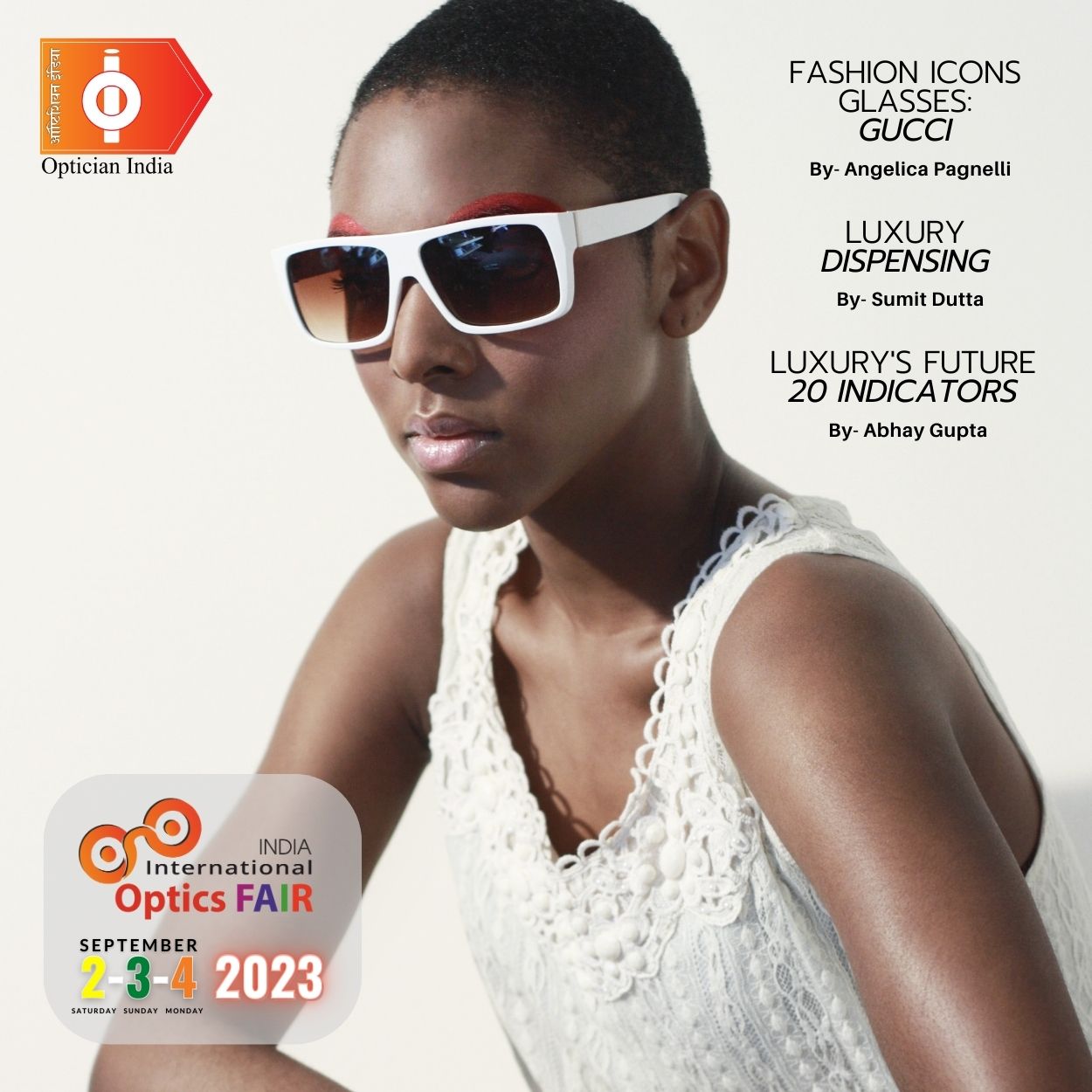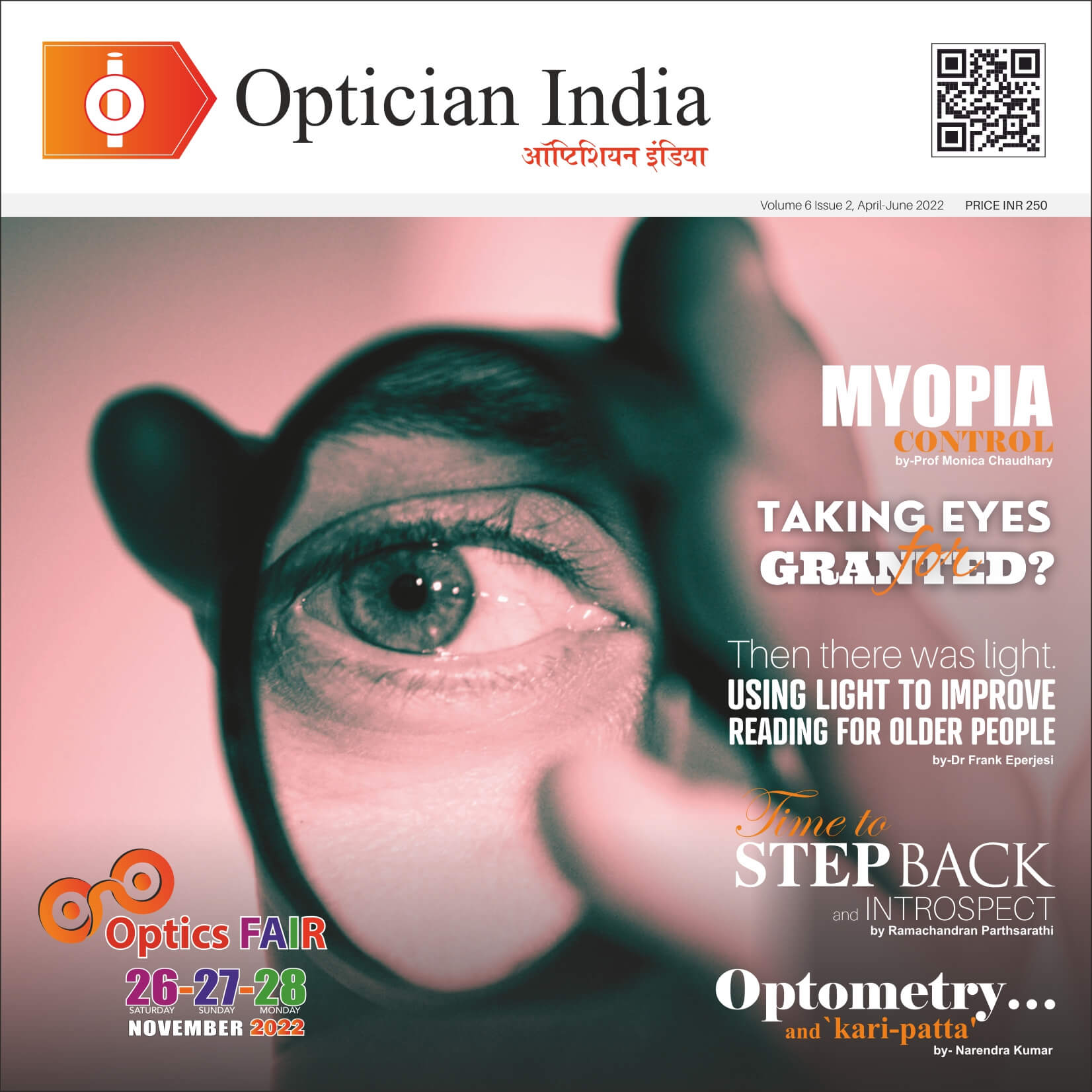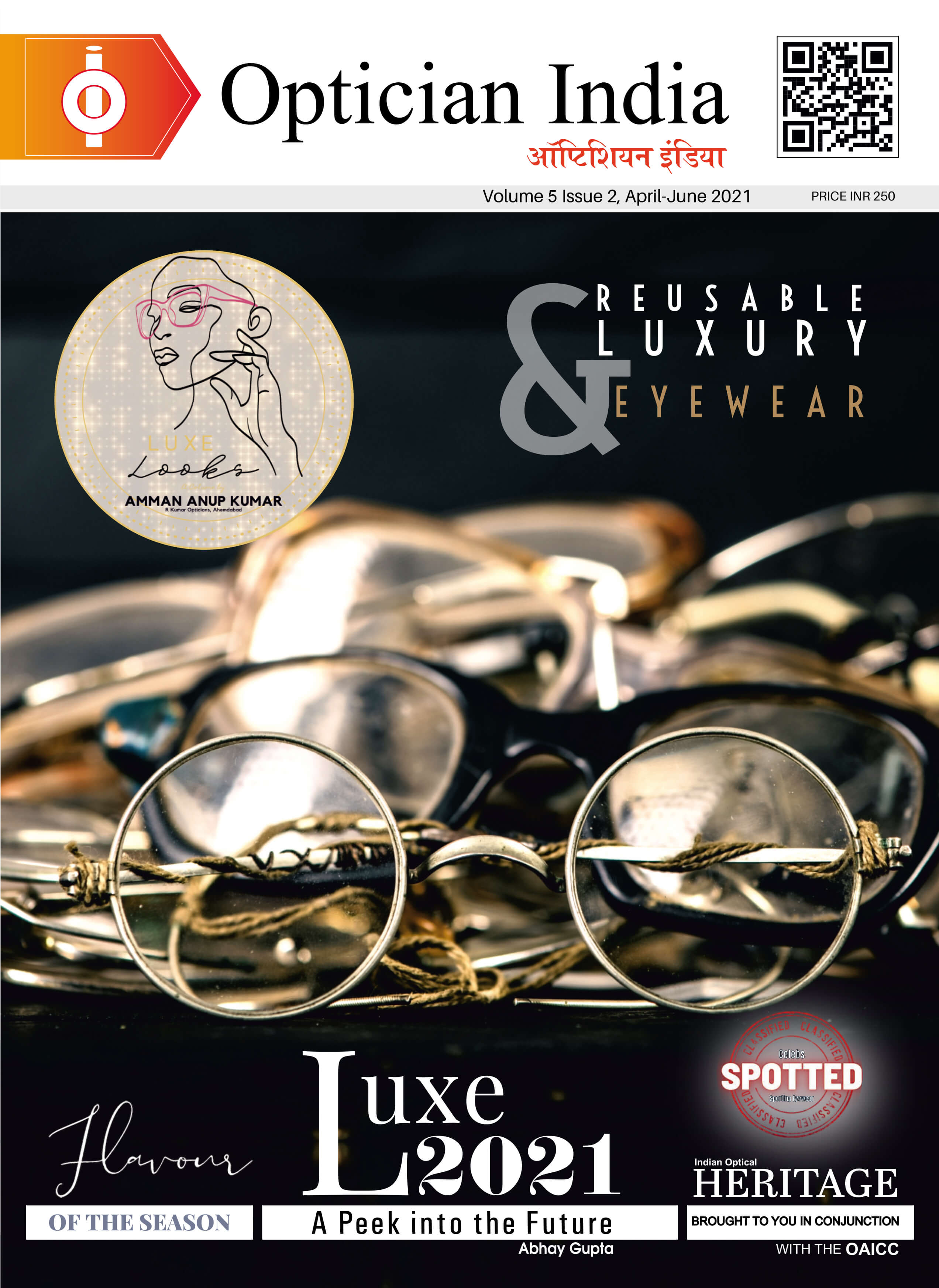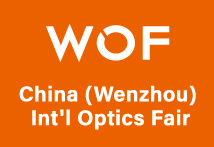Ophthalmic Lens Thickness Part -2
.jpg)
Article by: Shivam Mangla, (D. optom, ABOC, FBDO)
Overview of the previous part
A brief idea was presented regarding the calculation of lens thickness as per power, refractive index, and diameter of the lens. Few formulas were also mentioned with the help of which lens thickness could be calculated. In part one, centre and edge thickness of a spherical uncut lens of a particular diameter were considered, but in real life situations what we encounter majorly are sphero-cylinder powers and how thick those would appear after being fitted in a frame of particular shape and size along with the decentration done as per patient’s pupillary distance
Spherical VS Sphero-Cylinder Lens Design
2025-06-26T11_00_11.jpg) |
Unlike spherical lenses sphero-cylinder lenses are made from toroidal surfaces having different curves on a single surface of lens, hence thickness would also be different at horizontal and vertical extremities of a lens. Knowing the surface power of an ophthalmic lens forms the basis for calculating resultant lens thickness. In case of sphero-cylinder lens Toric transposition is the way to know these surface powers. Weather it is a stock finished lens or a Rx semi-finished lens blank both types of lenses are made with a pre-determined front curve often known as base curve.
Every manufacture has their own way of generating powers, some work by keeping front surface as the toroidal surface whereas some work by keeping back surface as the toroidal surface. Resultant thickness of the lens varies by changing the form of the lens. Although current manufacturers use computer-controlled system to select the values for curves as per the prescription and manufacturer has no control over changing the lens form as per their own wish. Hence the thickness we would be calculating will not be accurate but will give an approximate idea of how thick or thin the lens would appear after being fitted in a frame.
Pre-Determining the base curve
As mentioned in the previous part manufactures earlier used to consider Tshering’s ellipse for selecting values of base curves for a power or a chart has been decoded which provides certain Base Curve values for a particular power range.
Another way of knowing the base curve is Vogel’s rule. This rule of thumb can be used to determine the appropriate base curve based on the lens’s spherical equivalent power.
For Plus Powers
? BC = Spherical equivalent + 6.00 D
For Minus Powers
? BC = 1/2 Spherical equivalent + 6.00
After determining the base curve Toric Transposition is done to find the remaining curves
Toric Transposition (Front Toroidal Surface)
Step-1-: Select the front curve either by considering the chart provided or calculating using Vogel’s rule.
Step-2-: Treat the calculated front curve as base curve with axis perpendicular to the mentioned axis and add the cylinder value to base curve value to get the cross-curve value with axis same as the mentioned axis. For minus power lens first transpose it into +cylinder form and then add the cylinder value to obtain cross-curve value.
Step-3-: Back surface spherical curve is calculated by subtracting base curve from the sphere
value of the power given
E.g.-: F= +4.00DS/+2.00DC*180
Front curve/Base curve= Spherical Equivalent (Sphere value+1/2 of Cylinder value) + 6.00D
= (+4.00+1.00) + 6.00D
=+11.00DC*90
Cross curve= Base curve + cylinder value
=+11.00+2.00=+13.00DC*180
Sphere curve=
=+4.00-11.00D=-7.00DS
Toric Transposition (Back Toroidal Surface)
Step 1-: Front curve calculated would be treated as the spherical curve.
Step 2-: Base curve is calculated by subtracting Front Sphere curve from the sphere power of the prescription.
Step 3-: Cross-curve is obtained by adding the cylinder value to the base curve value
obtained by step 2.
E.g.-: F=-5.00DS/-2.00DC*180
Front Curve/Sphere Curve = ½ of Spherical Equivalent+6.00D
=-3.00D+6.00D
=+3.00DS
Base curve= Sphere Power-Front Curve
=-5.00-3.00=-8.00DC*90
Cross-curve=Base curve + Cylinder
=-8.00-2.00=-10.00DC*180
Impact of Lens Form on Lens Thickness
F=+4.00+2.00*180 Ng= 1.523 Diameter= 60mm Edge Thickness =0.5mm(Knife edge)
As per Vogel’s Rule Front Curve/Base Curve=+11.00D
As per Chart Provided by Manufacturer Front Curve =+7.00D
Toric Transposition (Front Toroidal Surface)
Base Curve=+11.00DC*90
Cross Curve=+13.00DC*180
Spherical Curve=-7.00DS
.jpg) |
Radius of Curvature (+11.00D) = +47.54 mm
Radius of Curvature (+13.00D) = +40.23 mm
=+174.33mm
Radius of Curvature (-7.00D) = +74.71mm
S1 = 13.42 mm (F = +13.00 D)
S2 = -7.00 D)
ET=0.5mm (Knife edge)
CT= S1-(S2-ET)
=7.34mm
Toric Transposition (Back Toroidal Surface)
Front Curve/Spherical Curve=+7.00DS
Back Curve@180=-3.00DC*90
Back Curve@90=-1.00DC*180
2025-06-26T11_06_03.jpg) |
Radius of Curvature(+7.00D) =+74.71mm
Radius of Curvature (-3.00D) =+174.33mm
Radius of Curvature (-1.00D) =+523mm
2= 0.86mm(F=-1.00D)
ET= 0.5mm(Knife edge)
CT= S1-(S2-ET)
= +6.22mm
From above calculation it is clear that form of the lens does create a great impact on the resultant thickness of the lens, hence manufacturers should carefully decide the form of the lens so as to make the lens as thin as possible.
Lens Thickness of a cut lens
Till now we have learned how to find thickness of an uncut lens of a particular diameter, but in reality, we would be doing thickness calculations on basis of particular size of frame and amount of decentration done as per patient’s interpupillary distance. This aspect of finding thickness not only requires calculations but bit of imagination also so as to get the results accurate.
=-7.00DS/-3.00DC*180
A size = 50mm
B size =42mm
DBL = 18mm
Right PD = 31mm
Left PD = 34mm
Fitting height = 24mm for right and 21mm for left
Decentration along horizontal meridian = ½
Frame PD- Patient’s monocular PD
1/2 (50+18)-31mm
= 3mm
Hence y would be (½ of A size – decentration required) for nasal edge and (½ of A size +decentration) for temporal edge. Similarly, y could be found for vertical meridian.
2025-06-26T11_22_45.jpg) |
Geometrical Representation
2025-06-26T11_25_10.jpg) |
2025-06-26T11_27_35.jpg) |
2025-06-26T11_31_15.jpg) |
While calculating thickness for a cut lens or lens that is fitted in a frame after being edged only parameter that changes is the diameter or the distance from the centre to the edge of the lens either horizontally or vertically, or it could be in both directions.
F=-7.00DS/-3.00DC*180 Ng=1.67
Front Curve (As per Chart) =+0.50D
Back Curve along 180 = -7.50D
Back Curve along 90 = -10.50D
CT=1.5mm
Thickness Calculation for Right Eye
ET along 180 (DecentredLens)
Y1(28mm) = Distance between centre and temporal edge
Y2(22mm) = Distance between centre and nasal edge
Temporal thickness calculation
S1= 0.30mm
S2= 4.50mm
ET= S2+CT-S1
= 5.7mm
Nasal thickness calculation
S1=0.18mm
S2= 2.75mm
ET= S2+CT-S1
= 4.07mm
Thickness Calculation for Left Eye
Along 180 (Non-Decentred)
Y=25mm
S1= 0.23mm
S2= 3.57mm
ET=S2+CT-S1
=4.84mm(at horizontal extremities)
ET along 90 (Decentred Lens)
Y1(18mm)= Distance between centre and upper edge
Y2(24mm)= Distance between centre and lower edge
Upper Edge thickness calculation
S1= 0.12mm
S2= 2.56mm
ET= S2+CT-S1
= 3.94mm
Lower Edge thickness calculation
S1= 0.21mm
S2= 4.68mm
ET= S2+CT-S1
= 5.97mm
Thickness Calculation for Left Eye
Along 180 (Non-Decentred)
Y=25mm
S1= 0.23mm
S2= 3.57mm
ET=S2+CT-S1
=4.84mm(at horizontal extremities)
Along 90 (Non-Decentred)
Y= 21mm
S1=0.16mm
S2= 3.55mm
ET=S2+CT-S1
=4.89mm(at vertical extremities)
2025-06-26T11_34_23.jpg) |
Note-: Another way to find the value of y is by placing the patient’s optical centre on the frame and then measuring distance from the centre to the edge of the frame by the help of ruler.
From above example it’s clear that lens thickness is less as well as equal at edges when the lens is not decentred and to eliminate decentration subject’s PD should match frame’s PD(A size + DBL).
Finding Power at Meridians other than Principal Meridians
In a sphero-cylinder lens maximum and minimum power are along the principal meridians which are not always horizontal or vertical, hence there should be a way out to find the powers along the meridians other than principal meridians. First case would be in which the principal meridians are horizontal or vertical but it is required to find the thickness at edges other than horizontal or vertical. Second case would be when the principal meridians are other than horizontal or vertical and thickness is to be found at horizontal and vertical edges. In both cases it would be required to know the exact powers along those meridians in which thickness needs to be found.
F=+5.00DS/+4.00DC*160
Fsph=+5.00D
Fcyl=+4.00D
Power along any other meridian= Fsph+Fcyl (Sin2A) where A is the angle between mentioned axis and the meridian along which power is to be found.
Power along 180 meridian = +5.00D+4.00D(Sin220) A=(160-180)
=+5.47D
Power along 90 meridian= +5.00D+4.00D(Sin270) A=(160-90)
=+8.52D
As now we have powers along horizontal and vertical meridians, we can find the thickness along 180 and 90 meridians.
2025-06-26T11_43_40.jpg) |
Thickness Variations as per Frame Shape
2025-06-26T11_45_09.jpg) |
Considering above drawn frame shape which have maximum distance of edges from centre at meridians other than 180 and 90, hence once again it would be required to calculate the power in the meridians other than the principal meridian and then calculate the edge thickness.
Placing the eye centre on the frame could be done by two ways either directly mark it on the frame with help of pen torch and marker or with the help of layout chart by finding the IPD and fitting height.
Once the centre has been placed on the frame with the help of ruler, distance between the centre and the edge along which thickness is to be found can be measured. Distance measured would be then used as y and hence thickness could be found.
Conclusion
In this part, we have learned how to calculate lens thickness of any Sphero-Cylinder power for any frame size along with the decentration done. In the upcoming part we will learn how to calculate thickness when prism is grinded into the lens along with a data regarding which frame shape and size is best suited for a particular range of power so as to get desired lens thickness. Another part would also include some special consideration while selecting the lens material and diameter of an uncut lens.


.jpg)
.jpg)
.jpg)
.jpg)


1.jpg)



.jpg)
.jpg)



_(Instagram_Post).jpg)
.jpg)
_(1080_x_1080_px).jpg)


with_UP_Cabinet_Minister_Sh_Nand_Gopal_Gupta_at_OpticsFair_demonstrating_Refraction.jpg)
with_UP_Cabinet_Minister_Sh_Nand_Gopal_Gupta_at_OpticsFair_demonstrating_Refraction_(1).jpg)

.jpg)








.jpg)



.png)




